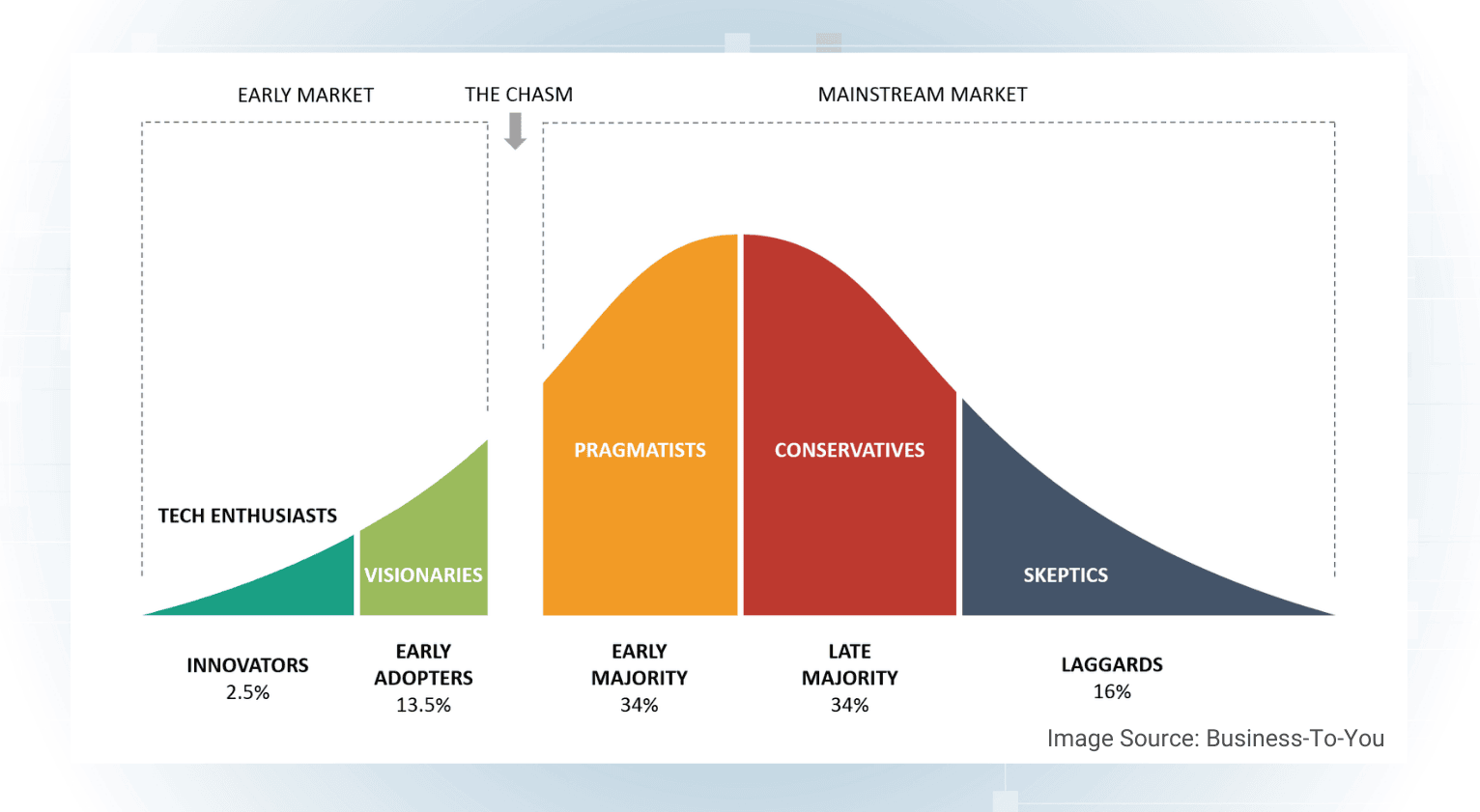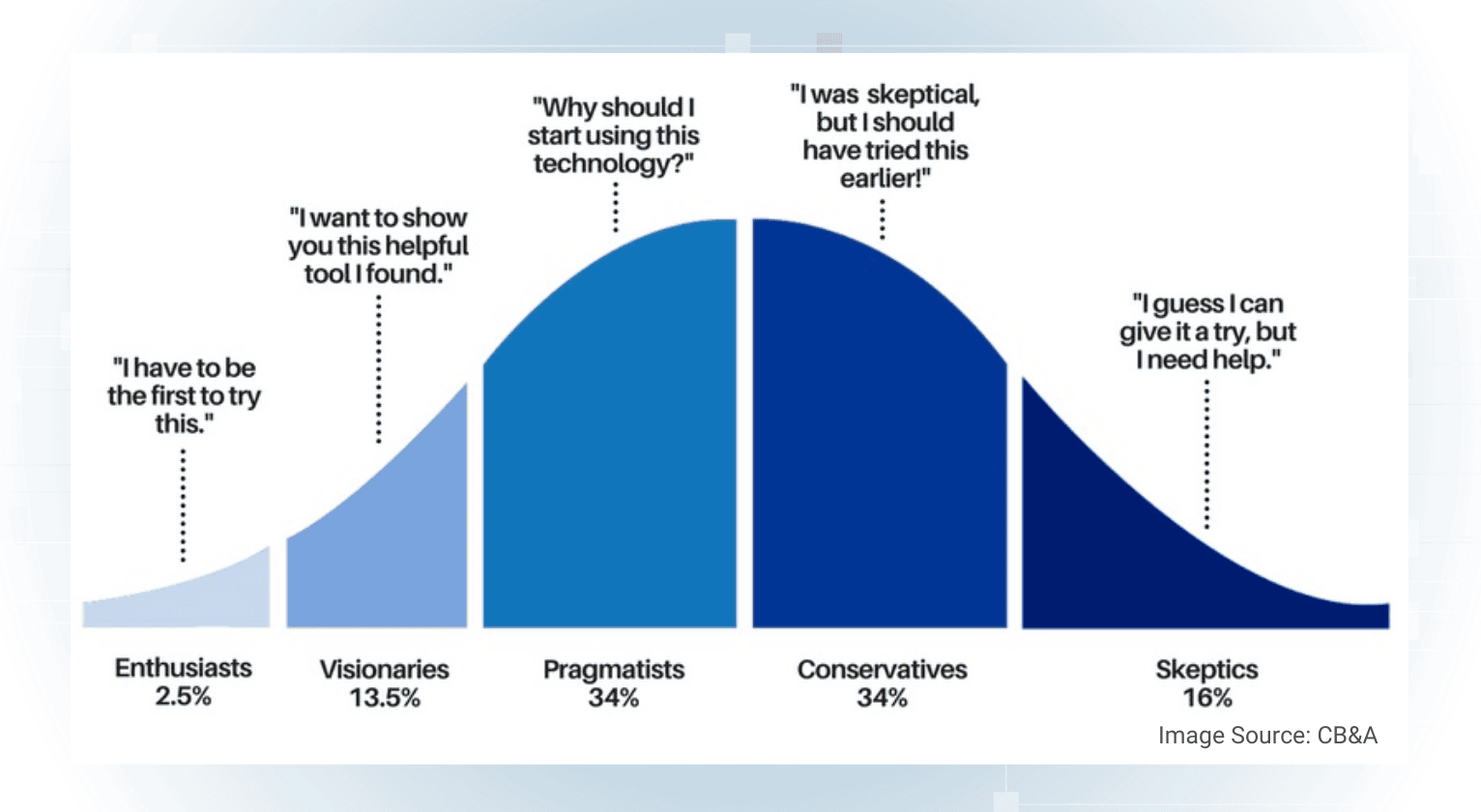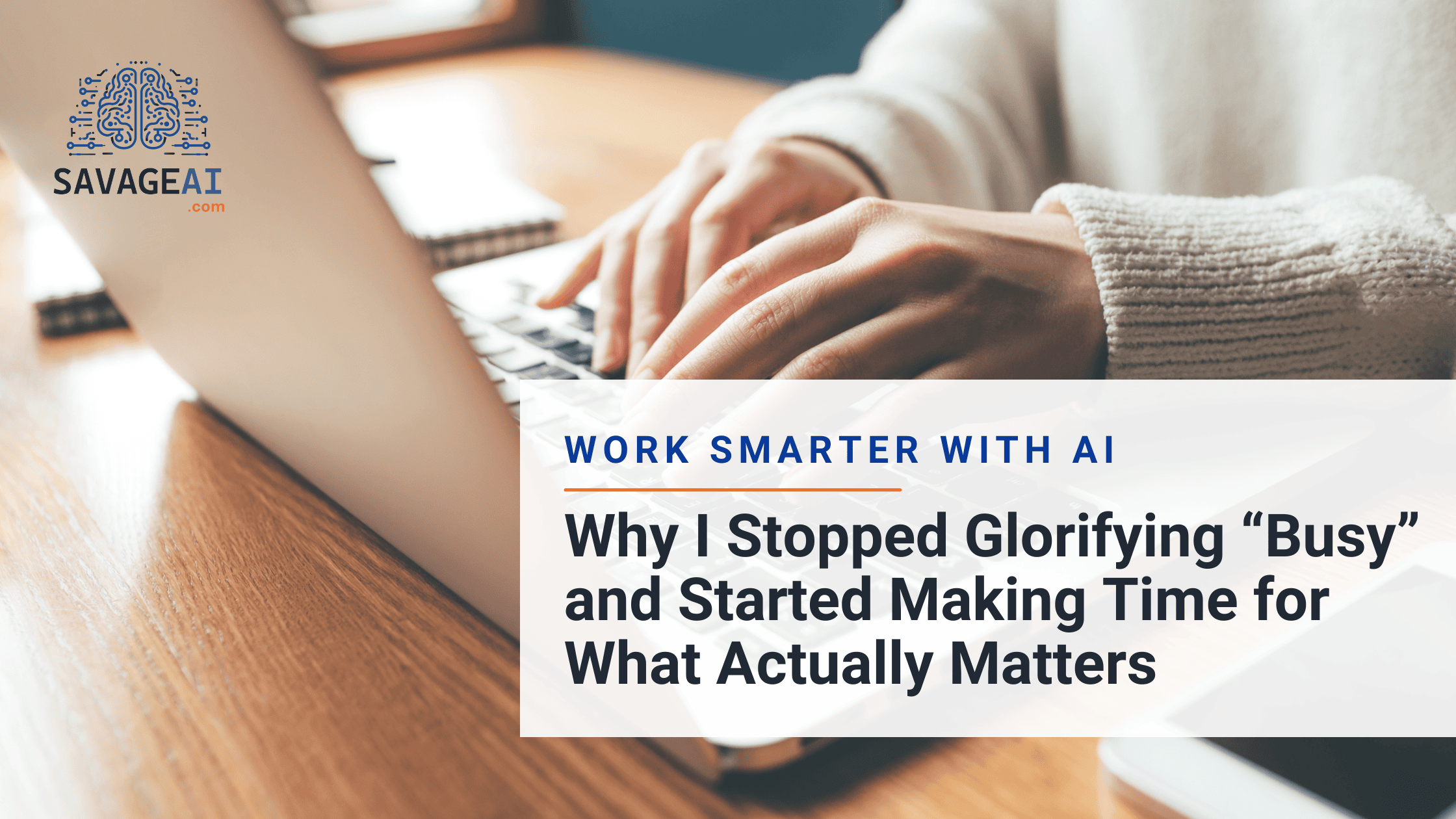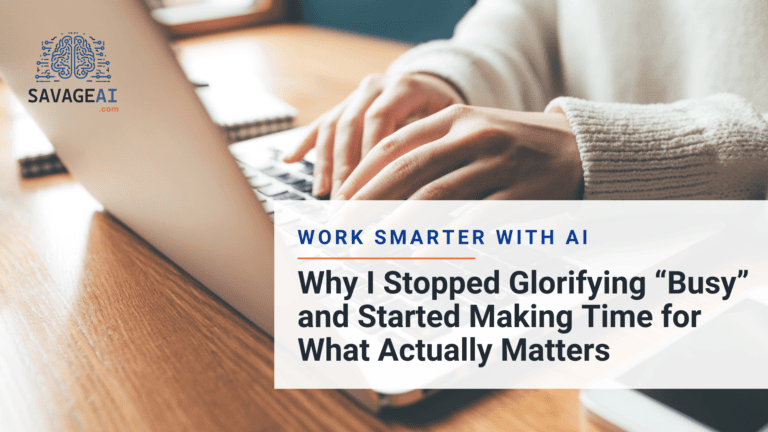Businesses are pouring millions into AI, yet most struggle to see real returns. Want to know the secret to turning your AI investment into a 3-5x ROI? Discover how strategic adoption using the AI Adoption Curve makes all the difference.
Artificial Intelligence is no longer a futuristic concept; it is here, revolutionizing businesses across industries. However, simply investing in AI tools like Microsoft Copilot does not guarantee success. Without proper training and structured adoption strategies, most employees will either ignore or resist the technology. The key to maximizing return on investment (ROI) on AI investments lies in understanding the AI Adoption Curve and addressing the needs of every group within your workforce (Rogers, 1962).
Table of Contents
Understanding the AI Adoption Curve
The Technology Adoption Curve, originally introduced by Everett Rogers, segments users into five distinct categories:

- Innovators (2.5%) – The earliest adopters who experiment with new technology before anyone else.
- Early Adopters (13.5%) – The visionaries who see the potential and are eager to integrate it into their workflow.
- Early Majority (34%) – The pragmatists who adopt once they see proven success.
- Late Majority (34%) – The conservatives who resist until the technology becomes the norm.
- Laggards (16%) – The skeptics who only adopt when they have no other choice (Moore, 1991).
The first two groups—Innovators and Early Adopters—make up only 16% of your workforce. If you rely solely on them to lead AI adoption, you risk leaving behind the other 84%, resulting in underutilized tools, wasted investment, and slower digital transformation (Westerman et al., 2014).
Why Enthusiasts and Visionaries Aren’t Enough?
Enthusiasts and visionaries are naturally inclined to explore AI and find ways to integrate it into their work. However, they represent a minority. The majority of employees—Pragmatists, Conservatives, and Skeptics—need more than just excitement about AI. They need guidance, training, and a clear path for practical implementation (Brynjolfsson & McAfee, 2017).

Without structured learning:
- Pragmatists won’t adopt AI unless they see proof of its effectiveness (Bughin et al., 2018).
- Conservatives will resist change unless adoption feels necessary and safe (Fountaine et al., 2019).
- Skeptics will avoid it entirely, often dismissing AI as unnecessary or overly complex (Gartner, 2020).
This is why training is essential—it bridges the gap between AI investment and effective utilization.
The Challenge of Pragmatists, Conservatives, and Skeptics
Unlike early adopters, the majority of your workforce is driven by evidence, necessity, and security. They don’t just need access to AI; they need structured education and reassurance. They need a training experience that eliminates fear, builds confidence, and demonstrates real-world value (Davenport & Ronanki, 2018).
Common adoption barriers include:
✅ Fear of AI replacing jobs (McKinsey, 2021)
✅ Lack of understanding of AI’s capabilities (PwC, 2022)
✅ Uncertainty on how AI integrates into existing workflows (Accenture, 2023)
✅ Resistance to change (Harvard Business Review, 2023)
Instructor-led training directly addresses these concerns by offering a guided, hands-on approach to AI adoption.
The Role of Instructor-Led Training in Driving Adoption

Imagine investing in a powerful AI tool like Microsoft Copilot but only seeing a small fraction of your team actually use it. The reality is, without structured training, that’s exactly what happens. Companies that fail to educate their employees on AI usage will see low engagement, wasted resources, and slower innovation (Bughin et al., 2018).
To maximize AI adoption and ROI, businesses must provide structured, instructor-led training that caters to all adoption groups. Here’s how:
🔹 Live Demonstrations & Hands-On Practice – Employees need to see AI in action, interact with it, and get immediate feedback (MIT Sloan, 2022).
🔹 Customized Use Cases – Training tailored to industry-specific needs ensures relevance (Capgemini, 2022).
🔹 Progressive Learning – A step-by-step approach makes adoption easier and less overwhelming (Gartner, 2023).
🔹 Interactive Q&A – Live sessions provide real-time answers to concerns, increasing confidence (Forrester, 2023).
🔹 Ongoing Support – Adoption doesn’t end after one session; continued guidance is key (Deloitte, 2023).
When employees feel confident using AI, businesses see increased productivity, streamlined workflows, and higher returns on investment.
Maximizing ROI Through AI Training
Investing in AI is a significant financial commitment, and without proper training, adoption rates can be as low as 10-20% across an organization. However, companies that provide structured training programs see adoption rates rise to 60-80%, leading to a 3-5x increase in ROI (McKinsey, 2021).

✅ Companies with AI training experience a 40% increase in productivity (PwC, 2022).
✅ Organizations that integrate AI training see a 30% improvement in decision-making efficiency (Accenture, 2023).
✅ Businesses leveraging AI through structured adoption programs report a 20-50% reduction in operational costs (Deloitte, 2023).
By prioritizing AI training, businesses ensure their technology investments translate into measurable financial gains, rather than becoming underutilized tools.
Learn AI with Us
AI isn’t a magic wand—it’s a tool, and like any tool, its value depends on how well it’s used.
The difference between companies that see mediocre results and those that achieve 3-5x ROI comes down to one thing: adoption. The question isn’t if you should invest in AI. It’s how you’ll make that investment count.
Ready to Bridge the Gap Between Investment and Impact?
At SAVAGE AI, we don’t just teach AI—we teach your team how to win with it.
Ready to turn your AI investment into real results? Let’s transform potential into performance—book your training today!
Work Smarter with AI: Why I Stopped Glorifying “Busy” and Started Making Time for What Actually Matters

Work Smarter with AI! Tired of burnout and hustle culture? Discover how I stopped glorifying “busy,” embraced AI, and finally started working smarter with more purpose and less stress. Table of ContentsThe Slow Burn of SuccessWhat “Busy” Really Costs UsWorking With AI, Not Against ItThe Research Behind Smarter WorkflowsResources to Help You Work SmarterIf you’re…
How to Calculate ROI on Microsoft 365 Copilot

Use your own data and calculate an implementation ROI for Microsoft 365 Copilot with our FREE calculator.
The AI Adoption Curve: How to 3-5X Your ROI with Strategic AI Implementation
Businesses are pouring millions into AI, yet most struggle to see real returns. Want to know the secret to turning your AI investment into a 3-5x ROI? Discover how strategic adoption using the AI Adoption Curve makes all the difference. Artificial Intelligence is no longer a futuristic concept; it is here, revolutionizing businesses across industries.…
Top 10 AI Tech Companies of 2024
Artificial Intelligence (AI) is transforming the way we live and work. Explore the top 10 AI tech companies that led the charge in 2024.
Microsoft — Responsible AI, Responsible Choice for Businesses
You keep hearing about artificial intelligence (AI). Did you know Microsoft has already integrated it into your Microsoft Office 365 apps?
Do you need a strong GPU to use AI?

To harness the full potential of AI, the right hardware is essential. But does that mean everyone needs a strong GPU to use AI?


